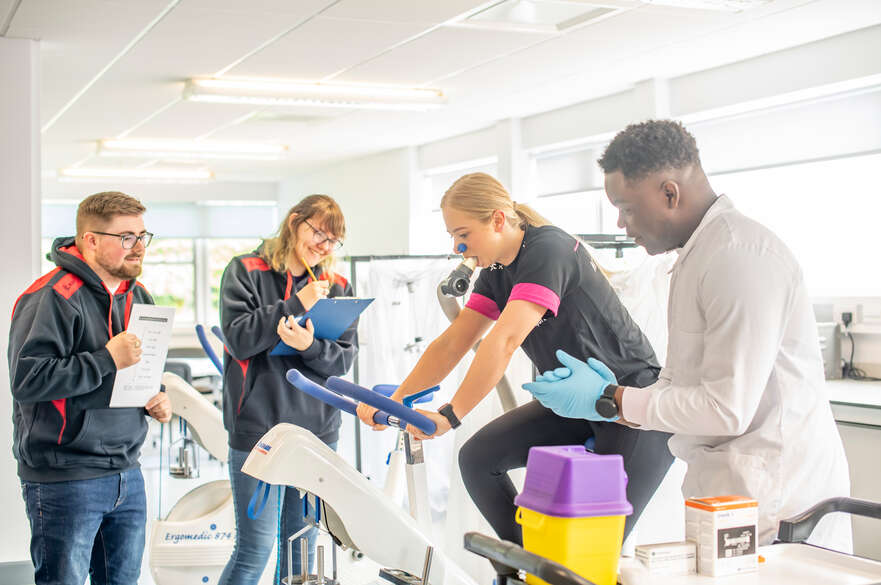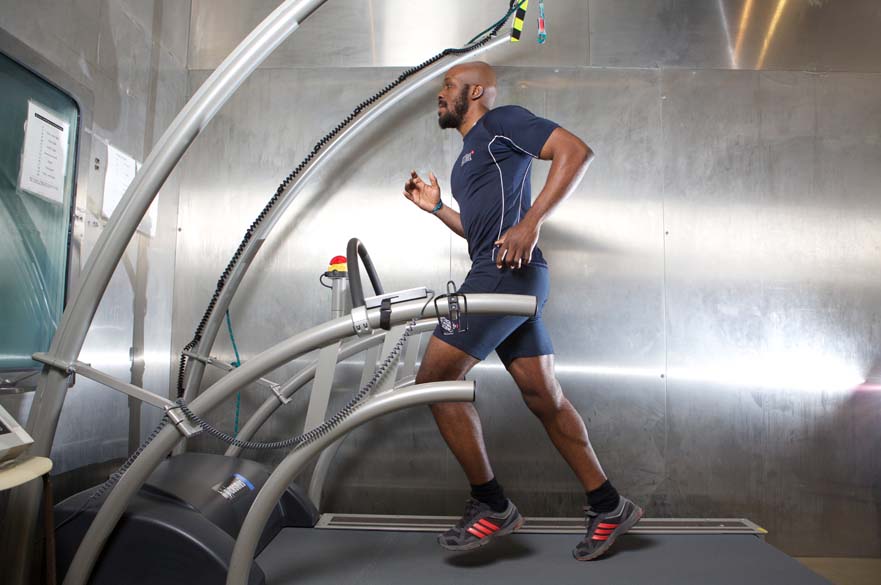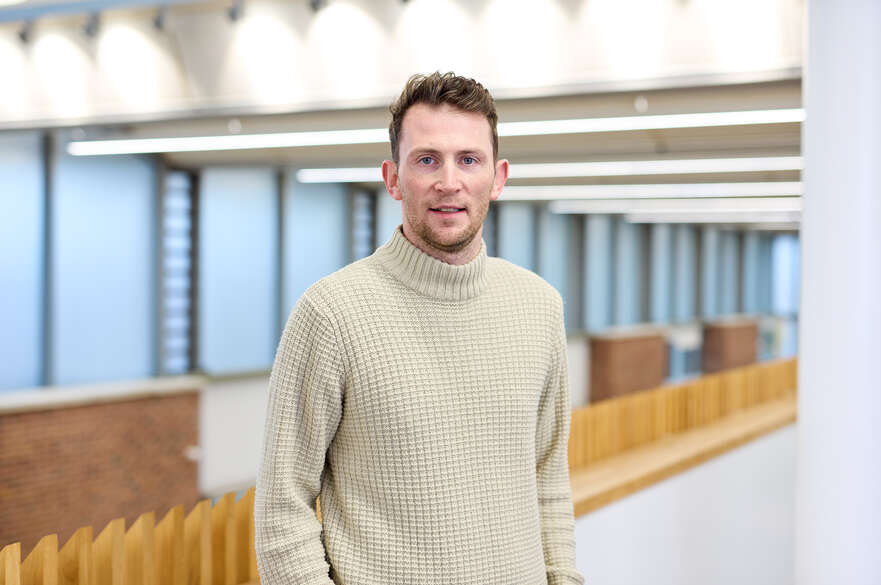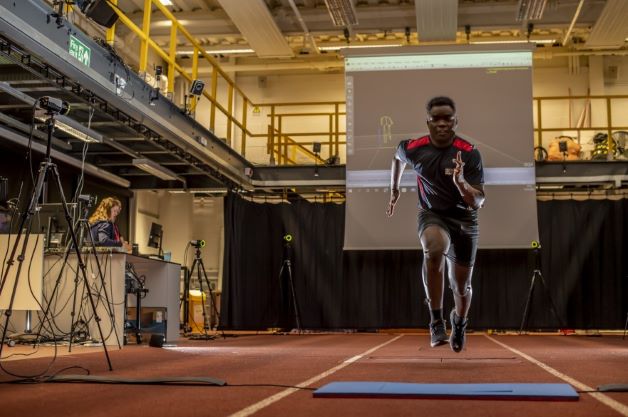Role
Paul Felton is a Senior Lecturer in Biomechanics in the School of Science and Technology. He has authored or co-authored world-leading, peer-reviewed research, has contributed to written-press and media features, and is the PI or Co-I for multiple PhD researchers.
Paul is one of cricket's most prominent applied researchers focussing on the technical characteristics linked to performance and injury. His main research interest lay within optimising individual sporting performance and has utilised predictive computer simulation models with industry collaborations including the England & Wales Cricket Board and the English Institute of Sport.
Paul also contributes to the teaching on the Sport and Exercise Science, Sport Science and Coaching, and Sport Science and Mathematics courses. He is the module leader of Applied Human Movement Science for Sport, and contributes to the following modules: Introduction to Human Movement Science, Analysis of Human Movement, Applied Sport Science, as well as supervising undergraduate and postgraduate projects.
Career overview
Nottingham Trent University
Senior Lecturer in Biomechanics (2020-present)
Lecturer in Biomechanics (2019-2020)
Loughborough University
Research Assistant in Sports Biomechanics (2015-2019)
PhD researcher in Sports Biomechanics (2010-2015)
MSc in Sports Biomechanics (2009-2010)
BSc in Mathematics (2006-2009)
Research areas
Dr Felton is is part of the Sport, Health and Performance Enhancement (SHAPE) research group.
His research focuses on:
- Optimising individual sporting performance by identifying the factors which limit performance using predictive modelling.
Coaching decisions regarding the technique of an individual athlete are often calculated guesses due to the difficulty in predicting the effect of this change on the athlete's performance. Paul's research focuses on using athlete-specific computer simulation models to predict the effect of these changes and reduce the guesswork in elite coaching. This approach builds on his PhD, funded by the England and Wales Cricket Board, in which he investigated the influence of variations of technique and strength on a fast bowler's performance, with the results used to scientifically inform coaching practice. Paul has since developed a number of torque-driven computer simulation models of sporting activities to inform elite coaching in areas such as running, jumping and throwing is currently collaborating alongside other national sporting organisations to develop this approach in other sports. - Kinematic and kinetic analysis of sporting technique for performance and injury
The cause and effect relationships of many sporting movements both from an injury and performance perspective remain unknown. Paul has a vast experience of collecting and processing research of elite athletes in a number of sports including cricket (batting and bowling), tennis, badminton and athletics.
Specific past and present projects include:
- A biomechanical analysis of fast bowling variations
- A biomechanical analysis of cricket batting
- A biomechanical analysis of overhead racket shots (badminton smash/tennis serve)
- Factors affecting performance in elite finger spin bowling
- Effect of technique on Lumbar stress fractures in cricket
- Physical determinants of performance in cricket
Applications for MRes/ MPhil/ PhD study in the areas identified above are encouraged. Further information may be obtained on the NTU Research Degrees website.
External activity
Recent External Roles
Recent Invited Contributions
Lecturers and presentations
July 2022: What is optimal technique for fast bowling? Cricket Research and Practice Conference, Witwatersrand, Johannesburg, South Africa.
June 2022: Cricket fast bowling: the science behind technique. Wollaton Science & Technology Club, UK.
December 2020: Understanding individual performance. England Golf Conference. Online.April
2020: Cricket Bowling Biomechanics. International Society of Biomechanics in Sports Invited Lecture Series. Youtube (https://youtu.be/HDl4FIUguC8).
Workshops
July 2022: From paper to practice: Bridging the gap between cricket fast bowling research and the players on the field. International Society of Biomechanics in Sports, Liverpool John Moores University, UK.
October 2022: Fast bowling workshop. East Midlands Coaching Conference, Derbyshire, UK.
November 2020: Teach coaches to use biomechanics, not teach coaches biomechanics. England Golf Conference. Online.
Media
May 2022: Finger Spin Bowling Biomechanics Cricket: How to spin the ball in cricket with proven technique. Cricket Life Stories
March 2022: Bowling Biomechanics Cricket: How to bowl fast in correct with correct technique. Cricket Life Stories
January 2022: The future is tall. The Cricket Monthly (from ESPN CricInfo)
July 2021: Stumped: BBC World Service cricket programme
May 2021: ‘Jofra Archer's elbow injury 'will need managing' for the rest of his career’ & ‘Jofra Archer to have surgery on elbow in bid to be fit for the Ashes’ . Daily Telegraph, UK.
March 2021: ‘Fast bowling: The Science behind the speed’. Women’s Criczone.
December 2020: ‘What Physical properties are required to be an express fast bowler, and have we reached the pace ceiling?’ Wisden Cricket Monthly.
February 2020: ‘The female pace race: who will be the fastest of them all?’ The Brisbane Times, AUS.
Periodicals
2022: Hitting for Six: Cricket Power Hitting Biomechanics. The Sport and Exercise Scientist.
Recent Professional Contributions
Journal reviewer
2016 - Now : Journal of Sports Sciences; Journal of Sport and Exercise Science; International Journal of Sports Physiology and Performance; Applied Sciences; International Journal of Sport Science and Coaching; Sports Biomechanics
Scientific committee member/reviewer
2022: 40th International Society of Biomechanics in Sports, Liverpool, UK
2021: 39th International Society of Biomechanics in Sports, Online
2021: 26th Congress of the European Society of Biomechanics, Milan, Italy
2020: 38th International Society of Biomechanics in Sports, Liverpool, UK
2020: 26th Congress of the European Society of Biomechanics, Milan, Italy
Session chair
2019: World Congress of Science and Medicine in Cricket, Loughborough, UK.
Conference organisation
2019: World Congress of Science and Medicine in Cricket, Loughborough, UK
2017: International Society of Biomechanics: Technical group on Computer Simulation, Gold Coast, Australia
Professional Memberships
2021 - Now: Coach Association, England & Wales Cricket Board
2014 - Now: Suspect Bowling Actions Panel, International Cricket Council
2014 - Now: International Society for Biomechanics in Sport
2014 - Now: International Society of Biomechanics
Professional Accreditation
2020 - Now: Fellow of the Higher Education Academy, UK.
2018 - Now: Coaching Young People and Adults’ Cricket – Level 2
Prizes
2017 - New Investigator Award, International Society for Biomechanics in Sport, Cologne.
Publications
KEYLOCK, L., FELTON, P., ALWAY, P., BROOKE-WAVELL, K., PEIRCE, N. and KING, M., 2022. Lumbar bone mineral adaptation: the effect of fast bowling technique in adolescent cricketers. Medicine and Science in Sports and Exercise, 54 (3), pp. 438-446. ISSN 0195-9131
MCERLAIN-NAYLOR, S.A., PEPLOE, C., GRIMLEY, J., DESHPANDE, Y., FELTON, P.J. and KING, M.A., 2021. Comparing power hitting kinematics between skilled male and female cricket batters. Journal of Sports Sciences, 39 (21), pp. 2393-2400. ISSN 0264-0414
ALWAY, P., FELTON, P., BROOKE-WAVELL, K., PEIRCE, N. and KING, M., 2021. Cricket fast bowling technique and lumbar bone stress injury. Medicine and Science in Sports and Exercise, 53 (3), pp. 581-589. ISSN 0195-9131
MCERLAIN-NAYLOR, S.A., KING, M.A. and FELTON, P.J., 2021. A review of forward-dynamics simulation models for predicting optimal technique in maximal effort sporting movements. Applied Sciences, 11 (4): 1450. ISSN 2076-3417
REDWOOD-BROWN, A., BROWN, H., OAKLEY, B. and FELTON, P., 2021. Determinants of boat velocity during a 200 m race in elite Paralympic sprint kayakers. International Journal of Performance Analysis in Sport, 21 (6), pp. 1178-1190. ISSN 2474-8668
MCERLAIN-NAYLOR, S.A., TOWLER, H., AFZAL, I.A., FELTON, P.J., HILEY, M.J. and KING, M.A., 2020. Effect of racket-shuttlecock impact location on shot outcome for badminton smashes by elite players. Journal of Sports Sciences, 38 (21), pp. 2471-2478. ISSN 0264-0414
FELTON, P.J., YEADON, M.R. and KING, M.A., 2020. Optimising the front foot contact phase of the cricket fast bowling action. Journal of Sports Sciences, 38 (18), pp. 2054-2062. ISSN 0264-0414
SANDERS, L., MCCAIG, S., FELTON, P.J. and KING, M.A., 2019. Passive range of motion of the hips and shoulders and their relationship with ball spin rate in elite finger spin bowlers. Journal of Science and Medicine in Sport, 22 (10), pp. 1146-1150. ISSN 1440-2440
Press expertise
Paul is available to discuss sporting technique and its impact on performance and injury (especially in cricket).
Course(s) I teach on
-
 Undergraduate | Full-time / Sandwich
Undergraduate | Full-time / Sandwichhttps://www.ntu.ac.uk/archive/course-search/science-technology/ug/2023/bsc-hons-sport-science-and-mathematics
-
 Undergraduate | Full-time / Sandwich
Undergraduate | Full-time / Sandwichhttps://www.ntu.ac.uk/archive/course-search/science-technology/ug/2023/bsc-hons-sport-and-exercise-science
-
Undergraduate | Full-time / Sandwich
https://www.ntu.ac.uk/archive/course-search/science-technology/ug/2023/bsc-hons-sport-science-and-coaching

